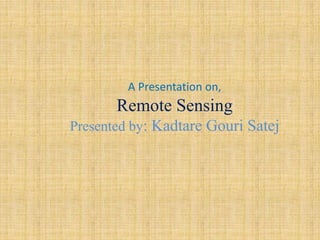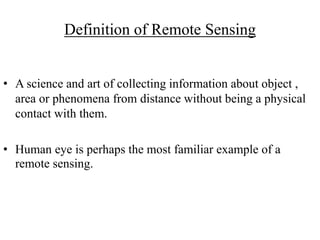The document presents an overview of remote sensing, defining it as the collection of information about objects or areas from a distance without physical contact. It discusses the remote sensing process, including data acquisition and analysis, and covers classifications, advantages, and disadvantages of remote sensing. Applications of remote sensing are highlighted across various fields such as agriculture, geology, and environmental monitoring.
















